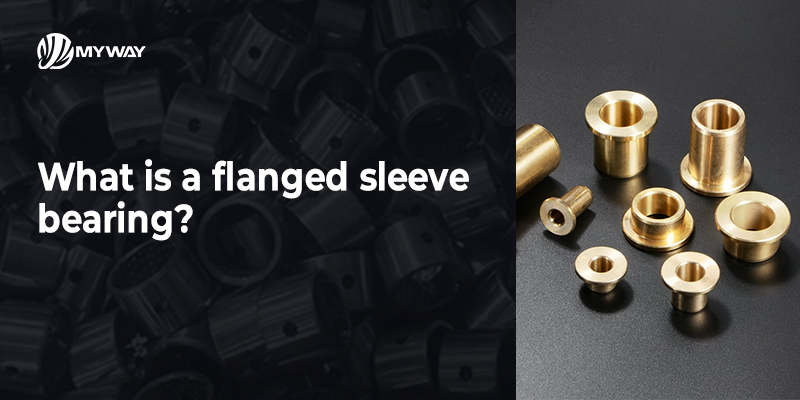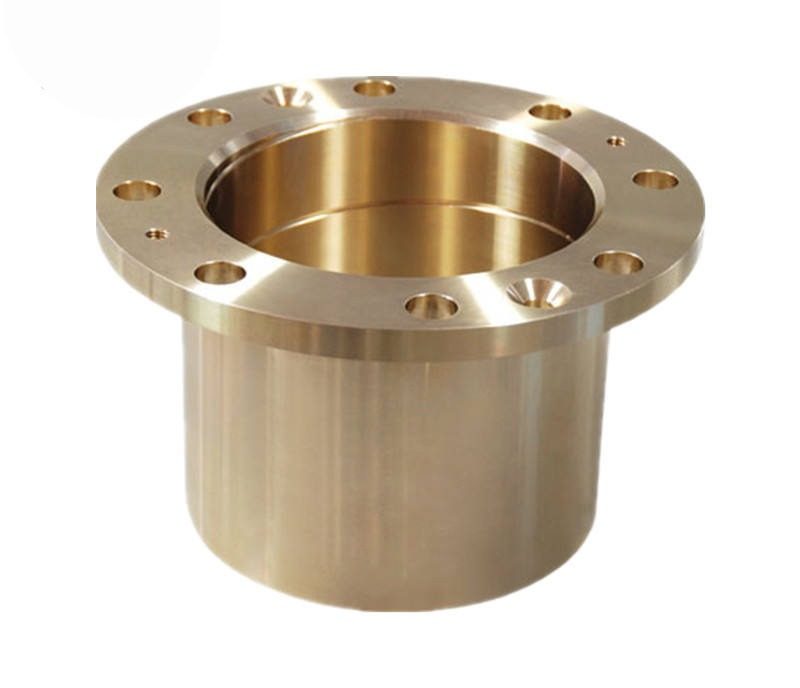
Home » Self lubricating bushings » What is a Flanged Sleeve Bearing? A Complete Guide for B2B Buyers
What is A Flanged Sleeve Bearing?
In the world of machinery, equipment, and mechanical systems, choosing the right type of bearing is critical to how well your gear works, how long it lasts, and how much money you spend to keep it running. We hear terms like flanged sleeve bearing, flanged bushings, and flange sleeve all the time. However, it’s confusing if you don’t know what they are or which product to buy when you need them.
Table of Contents
1. What is a Flanged Sleeve Bearing? Key Features and Applications

A flanged sleeve bearing is a bearing that has a flange attached to a typical sleeve bearing. The purpose of that flange is to give you the ability to mount it and keep it in position, as well as to make sure it is in line and doesn’t move once it is positioned. This bearing features a smooth, round sleeve that reduces the amount of metal-on-metal friction between the shaft and the bearing.
Key Benefits of Flanged Sleeve Bearings:
- Easy to Install: We like the flange because it’s quick to install (and you don’t need an extra piece to mount the bearing).
- Load: Flanged sleeve bearings are going to carry medium to heavy loads which makes them perfect for all types of industrial equipment, automobiles and tractors.
- Lubrication: Either self-lubricating (or can use lubricant) depending on the material and the design of the bearing.
Use flanged sleeve bearings in things that carry a heavy load and need a substantial amount of support, such as pumps, compressors, and motors.
2. Flanged Bushing vs. Flanged Sleeve Bearing: Which is Right for Your Application?
2.1 What is a Flanged Sleeve? How Does it Differ from Other Bearings?
Flange sleeves are a combination of a flange and a sleeve bearing. Most equipment that requires a sleeve bearing also requires precision alignment and stability over the long term. Like sleeve bearings, flange sleeves give that added support and stability.
Applications of Flanged Sleeves:

3. Flanged Bushing vs. Flanged Sleeve Bearing: Which One to Choose?
When choosing between flanged sleeve bearings and flanged bushings, consider the following factors:
4. Why Choose a Flanged Sleeve Bearing Over a Regular Sleeve Bearing?
5. How Do Flanged Bearings Benefit B2B Buyers?
6. Conclusion
100000+ Types of Bushings – Contact Us for Details
